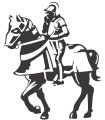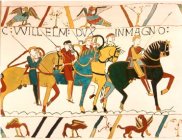
Worksheets and No Prep Teaching Resources
Reading Comprehension Worksheets
Middle Ages

Middle Ages
 Worksheets and No Prep Teaching Resources Reading Comprehension Worksheets Middle Ages |
 Middle Ages |
| edHelper's suggested reading level: | grades 5 to 7 | |
| Flesch-Kincaid grade level: | 6.45 |
|
The Norman Conquest
By Sharon Fabian |

|
 1 The year was 1066 AD. The Middle Ages had already been going on for 600 years. During that 600 years, many battles had been fought, land had frequently changed hands, and rulers had often been replaced by new rulers all over Europe. Parts of Europe had begun to settle into large kingdoms, much like the countries of Europe today. Other parts were still disorganized with no central government.
1 The year was 1066 AD. The Middle Ages had already been going on for 600 years. During that 600 years, many battles had been fought, land had frequently changed hands, and rulers had often been replaced by new rulers all over Europe. Parts of Europe had begun to settle into large kingdoms, much like the countries of Europe today. Other parts were still disorganized with no central government. |
Create Weekly Reading Books
Prepare for an entire week at once! |
| Leave your feedback on The Norman Conquest (use this link if you found an error in the story) |
 |
Middle Ages
|
 |
Social Studies
|